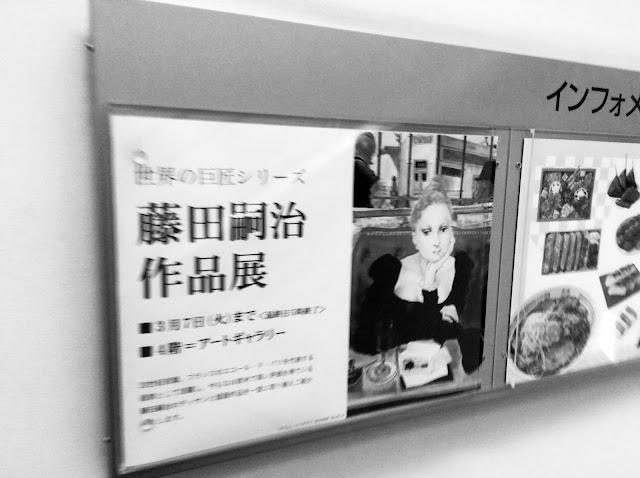Brooklyn Museum Current Exhibition Review& Archive: What it means to be Interactive in Art
 |
| The Dinner Party by Judy Chicago |
I would go with Judy Chicago and Jeffery Gibson with no question. To me, their works and the exhibitions are more interactive and stimulus to my mind in long term.
What I often realize about Brooklyn Museum exhibitions is that the amount of time and perhaps passion and effort (and maybe budget) to make one show is dramatically different in each show even comparing exhibitions held at the same timing. Even in the shows happening at the same time the difference in quality is drastic compared to other museums I visit, which is quite interesting to me.
It was entertaining and impressive yet I had to wonder what happened for the exhibition to have such rough installation (why the show was so roughly made considering that it's a museum exhibition) because there are amazingly set up exhibitions in the same building.
I will always prefer an exhibition of my own to be Judy Chicago and Jerrery Gibson than JR's (this specific exhibition) as a visitor and as an artist.
Jeffrey Gibson: When Fire Is Applied to a Stone It Cracks
February 14, 2020–January 10, 2021
Jeffrey Gibson, an artist of Choctaw and Cherokee descent, incorporates elements of Native American art and craft into his practice, creating a rich visual and conceptual dialogue between his work and the histories that inform it. In Jeffrey Gibson: When Fire Is Applied to a Stone It Cracks, he selected objects from our collection, which are presented alongside his recent work. The resulting multimedia, floor-to-ceiling installation questions long-held institutional categorizations and representations of Indigenous peoples and Native American art. It also provides a context for Gibson’s work and acts as a contemporary lens through which to see historical works by both Indigenous and non-Native peoples.
Gibson’s works on view include garments, beaded punching bags, paintings on hide and canvas, and ceramic vessels. Collection objects include moccasins, headdresses, ceramics, rawhide, and examples of beadwork and appliqué. The exhibition also features rarely exhibited materials from our Archives and Library Special Collections that shed light on the formation of our Native American collection in the early twentieth century by curator Stewart Culin.
Jeffrey Gibson: When Fire Is Applied to a Stone It Cracks is organized by Jeffrey Gibson and Christian Ayne Crouch, Curatorial Advisor, with Eugenie Tsai, John and Barbara Vogelstein Senior Curator, Contemporary Art, and Erika Umali, Assistant Curator of Collections, with support from Nancy Rosoff, Andrew W. Mellon Senior Curator, Arts of the Americas, and Molly Seegers, Museum Archivist, Brooklyn Museum. -Brooklyn Museum

JR: The Chronicles of New York City
November 18, 2020–February 14, 2021
Over the past fifteen years, French artist JR has emerged as a powerful storyteller, using primarily photographic murals and other public art to honor the voices of everyday people and connect diverse communities around the world. The Chronicles of New York City is an epic mural of more than one thousand New Yorkers that is accompanied by audio recordings of each person’s story.
In the summer of 2018, JR and his team spent a month roaming all five boroughs of New York City, parking their 53-foot-long trailer truck in numerous locations, and taking photographs of passersby who wished to participate. Each was photographed in front of a green screen, and then the images were collaged into a New York City setting featuring architectural landmarks. The participants chose how they wanted to be represented and were asked to share their stories, which are now available on a free mobile app. The resulting mural, The Chronicles of New York City, premiered at the Museum in 2019 as part of the exhibition JR: Chronicles (October 4, 2019–October 18, 2020). -Brooklyn Museum
It's the experience that is the new art here. His work performs as a commercial of own work. His work is like fashion. Visual oriented, participating, very inviting work. It's not the same but shares a common characteristic to Yayoi Kusama's dot stickers interactive Obliteration Room, for instance. Also very clever in terms of the commercial and advertising side of large scale work, to have many citizens involved in his work, that all of them and their friends will be his audience. At this point his work is also like a film with many extra. The photo quality of each individual was amazing, I wish if the printing and pasting on the wall was handled much carefully and professionally. I guess this is the difference between classic visual artists and large format contemporary artists that they can be less careful with what their staff (or whoever put together the prints, his work, on wall) do to their work.
I should note that I still enjoy his work, what I wrote is my simple question to art and artists and who create exhibitions.
The Dinner Party, an important icon of 1970s feminist art and a milestone in twentieth-century art, is presented as the centerpiece around which the Elizabeth A. Sackler Center for Feminist Art is organized. The Dinner Party comprises a massive ceremonial banquet, arranged on a triangular table with a total of thirty-nine place settings, each commemorating an important woman from history. The settings consist of embroidered runners, gold chalices and utensils, and china-painted porcelain plates with raised central motifs that are based on vulvar and butterfly forms and rendered in styles appropriate to the individual women being honored. The names of another 999 women are inscribed in gold on the white tile floor below the triangular table. This permanent installation is enhanced by rotating Herstory Gallery exhibitions relating to the 1,038 women honored at the table. -Brooklyn Museum


















































